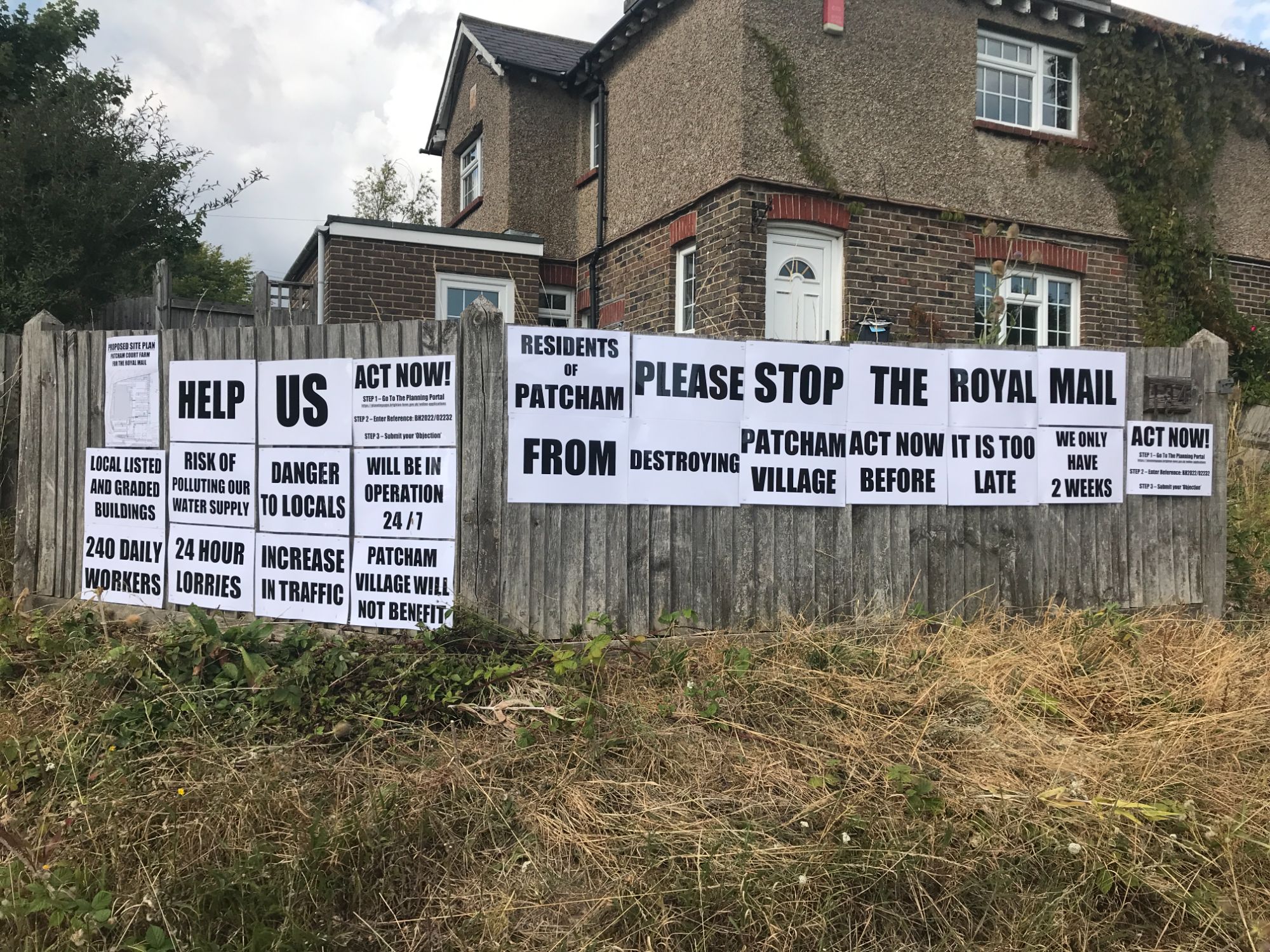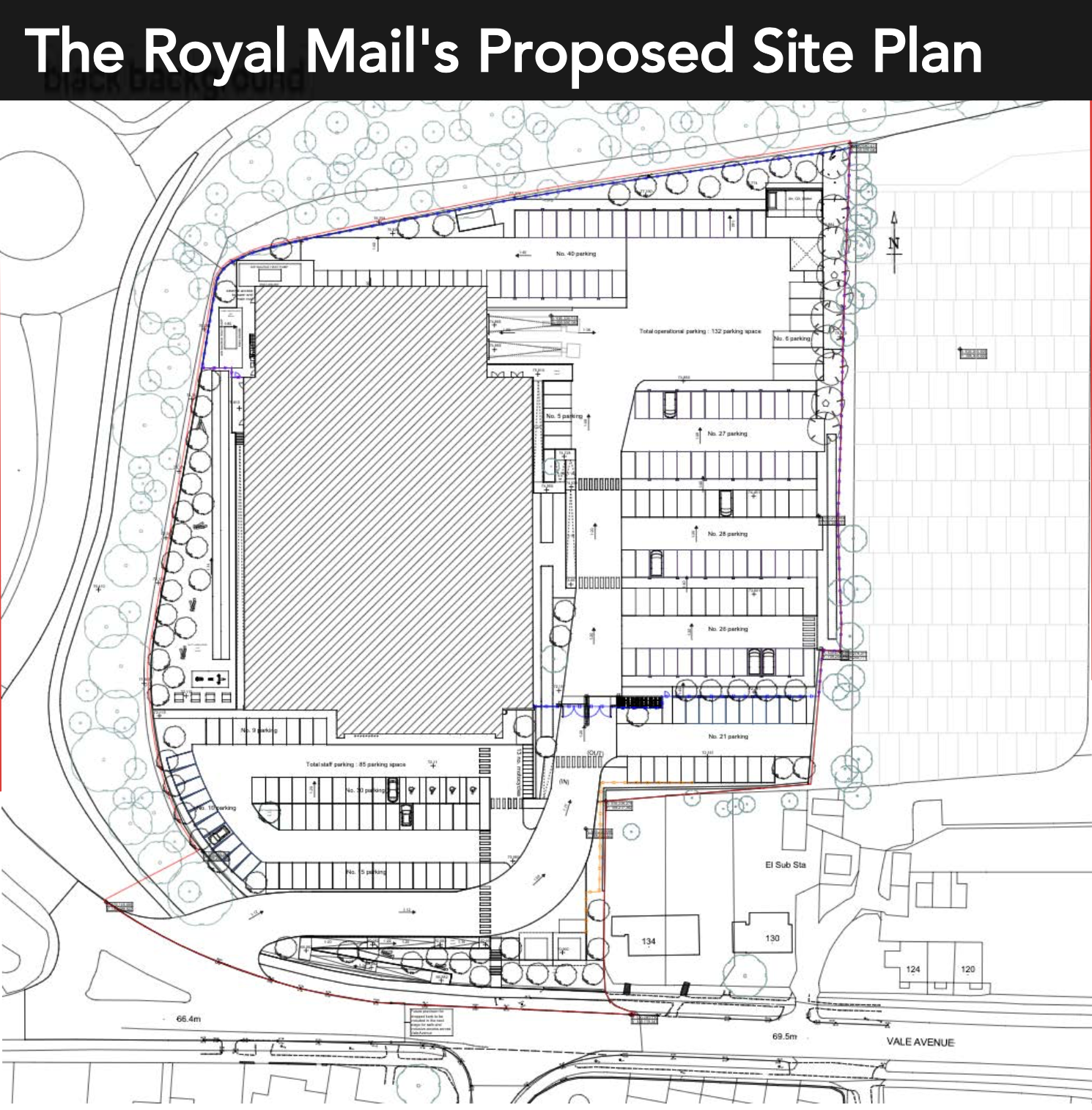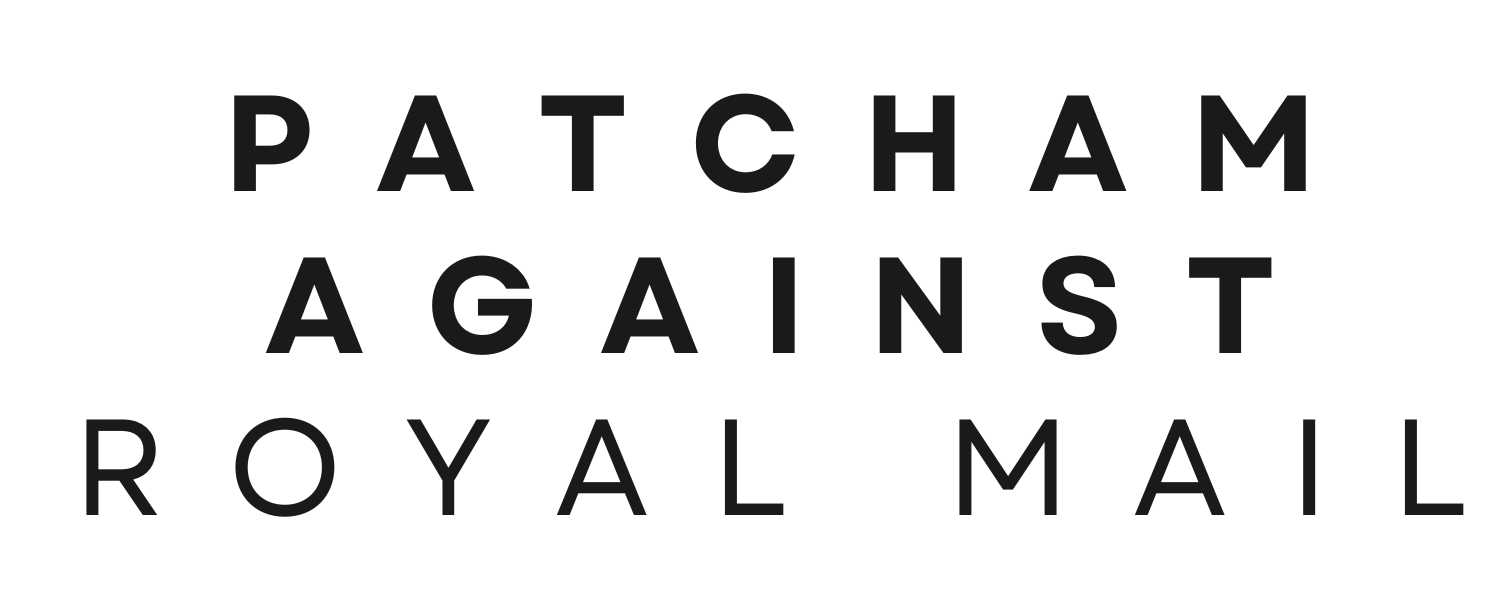
YOUR OBJECTIONS ARE NEEDED!
We need to have our say again
The Royal Mail want to relocate two delivery offices based in Brighton and Hove to Patcham Court Farm located on Vale Avenue in Patcham Village.
The Royal Mail conveniently submitted this Planning Application (BH2022/02232) while most people are busy on their Summer Holidays!

Please take five minutes to object
OBJECTING ON ECOLOGICAL IMPACT
Here are just some of the reasons that the planning application should be objected on.
- Royal Mail are using Biodiversity Net Gain policies to rebuild all the nature on the site at a farm in Lewes. They will pay the farm to replicate the natural environment we have here and wipe out everything on the site aside from a few trees.
- A site in this sensitive location should deliver a biodiversity net gain on site. The Planning Statement in paragraph 5.36 admits a net gain cannot be delivered on site and off site mitigation is not considered sufficient or acceptable.
"The National Planning Policy Framework sets out principles that local planning authorities should seek to apply when determining planning applications to protect and enhance biodiversity; these include refusing planning permission if significant harm to biodiversity from a development cannot be avoided (through locating on an alternative site with less harmful impacts), adequately mitigated, or, as a last resort, compensated for."
- Loss of existing habitat perfect for Slow Worms, Adders, Bats and Owls, Hazel Dormice, Reptiles and insects. Their own report states this is ideal supporting habitat and that there will be an 89.3% net loss of existing scrubland.
- The Council's Ecology report for the Abergavenny Cottages (now Brown's Cottages on the other side of the allotments) as a guide for what ecology may be supported on the proposed linked site, the following is understood:
To be clear this information is not a survey of the proposed Royal Mail site but it is in close proximity being less that 50 metres away:
BATS - All species of bats are fully protected under the Wildlife and Countryside Act 1981, as amended, and the Conservation of Habitats and Species Regulations 2010, making them European Protected Species. The terraced dwellings on site were assessed as having moderate bat roost potential although surveys found no evidence of roosting bats. Bats were recorded commuting through the site. Any external lighting should therefore take account of best practice guidance to minimise impacts on bats.
BREEDING BIRDS - The site has the potential to support breeding birds. Under Section 1 of the Wildlife and Countryside Act 1981 (as amended), wild birds are protected from being killed, injured or captured, while their nests and eggs are protected from being damaged, destroyed or taken. To avoid disturbance to nesting birds, any demolition of buildings or removal of scrub/trees that could provide nesting habitat should be carried out outside the breeding season (generally March to August). If this is not reasonably practicable within the timescales, a nesting bird check should be carried out prior to any demolition/clearance works by an appropriately trained, qualified and experienced ecologist, and if any nesting birds are found, advice should be sought on appropriate mitigation.
HEDGEHOGS - The adjacent allotments are suitable for hedgehogs. The hedgehog is listed as a Species of Principal Importance under Section 41 of the NERC Act, populations having suffered significant declines in recent years. Any boundary fences should therefore include gaps to allow connectivity for hedgehogs.
REPTILES - Three juvenile slow worms were recorded on site during the site assessment.
You can read their full report here. -
Policy CP10 of Brighton & Hove City Council’s City Plan Part One states that all development proposals should conserve biodiversity, protecting it from the negative indirect effects of development; provide net gains for biodiversity wherever possible, taking account of the wider ecological context of the development and of local Biosphere objectives; and contribute positively to ecosystem services, by minimising any negative impacts and seeking to improve the delivery of ecosystem services by a development.
- The proposed site is linked by green space and allotments to the Ladies Mile Local Nature Reserve (LNR). This stretches from Ladies Mile Road in Patcham up to the top of Carden Avenue in Hollingbury. The council website describe this as "an important green corridor linking with Stanmer Park to the north east." Since the proposed site is substantially rewilded it is highly likely it is positively contributing to the biodiversity and natural habitat of the area.
- The proposed site borders the National Park (the South Downs) and will impact the dark skies reserve there as it will be illuminated with depot style lighting 24/7.
Brighton and Hove Wildlife Forum's Registered Objection
Please find below comments from Brighton and Hove’s Wildlife Forum in response to BH2022/02232
Brighton and Hove’s Wildlife Forum members come from a range of local wildlife groups, also known as 'Friends Groups', and local experts in their field, such as volunteers from Butterfly Conservation, naturalists, students and professional environmental consultants. But we all share the same enthusiasm for wildlife and the same concerns for its future. Our commitment is to conserve and enhance Biodiversity across the Brighton and Hove area.
We believe nature has intrinsic value and is vital for our wellbeing. We want to make our city richer in nature and increase people's engagement with the natural world. We will work with others to protect, enhance, celebrate and increase awareness of the habitats, features and species special to Brighton and Hove. BHWF looks forward to a future where nature and our community live together to our mutual benefit, enabling our city to play its part in addressing the nature and climate crises."
BHWF objects to the planning proposal for the following reasons:. -
There is currently a 83.93% loss in biodiversity according to the metric. Obviously, this is not acceptable or policy compliant. The applicants should do more to both preserve habitat on site and outline viable offsite delivery.
It is not ok to leave these discussions until after permission is granted.
If they can’t evidence at least a 10% net gain, the planning permission must be refused.
Also given the habitat being lost is scrub and usually net gain requires replacement of the same or higher value habitat, the applicants need to think really carefully about what habitat is appropriate offsite and where it would go. Clearly they shouldn’t be creating scrub on chalk grassland for example. Without this required detail in the proposals, BNG measures cannot be assessed.
- The Ecological Impact Assessment shows that the reptile, bat and dormice surveys are still outstanding, so again a decision can’t be made until this information is provided and assessed.
- The EcIA also relies on offsite BNG to conclude a positive impact and again has no detail. Overall the application says that the existing habitats (scrub) don’t have much value and that the new habitats on site will have more value. However, there seems to be very little onsite habitat creation and all of them will be negatively impacted by the people and cars using the site. Offsite BNG might be the better but it needs to be really well thought out.
With the lack of surveying thus far, onsite scrub may have more value than is being stated.
- Finally, overall, the development is being sold as ‘carbon neutral’, but is providing significant car parking spaces. This appears contradictory.
